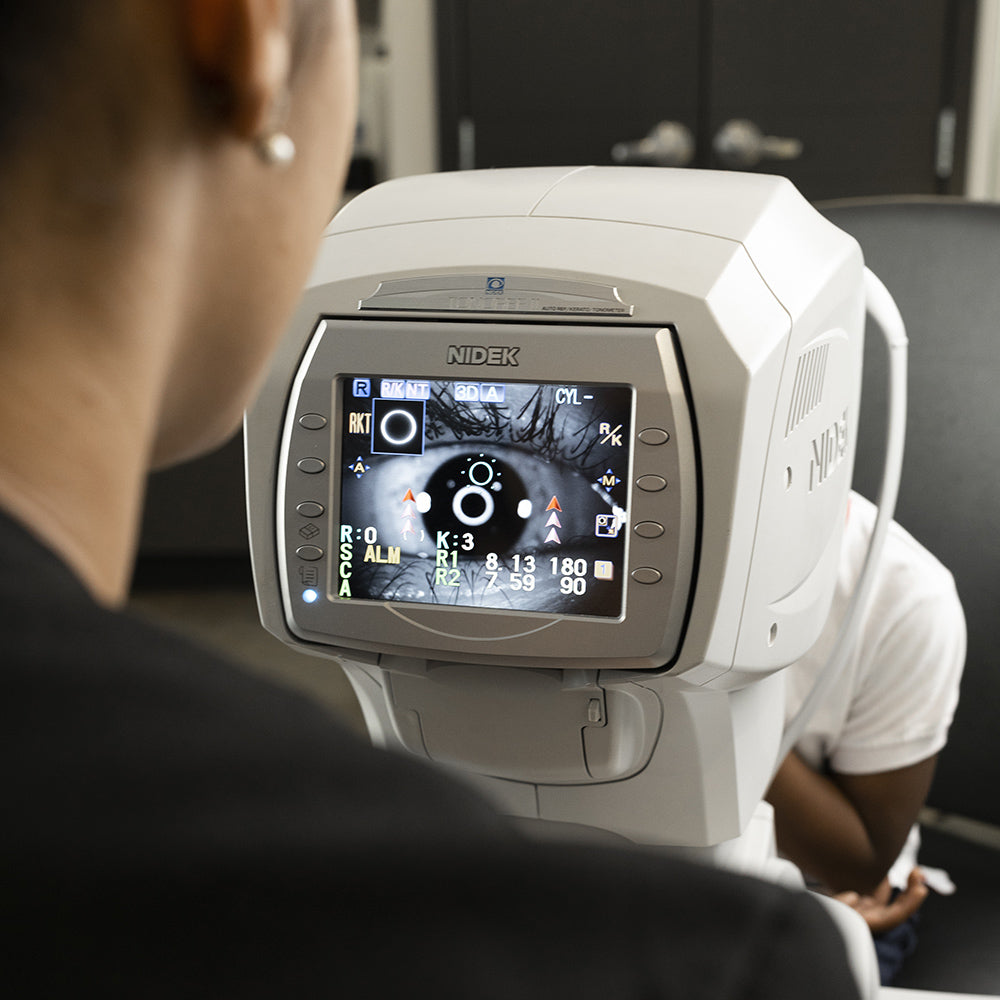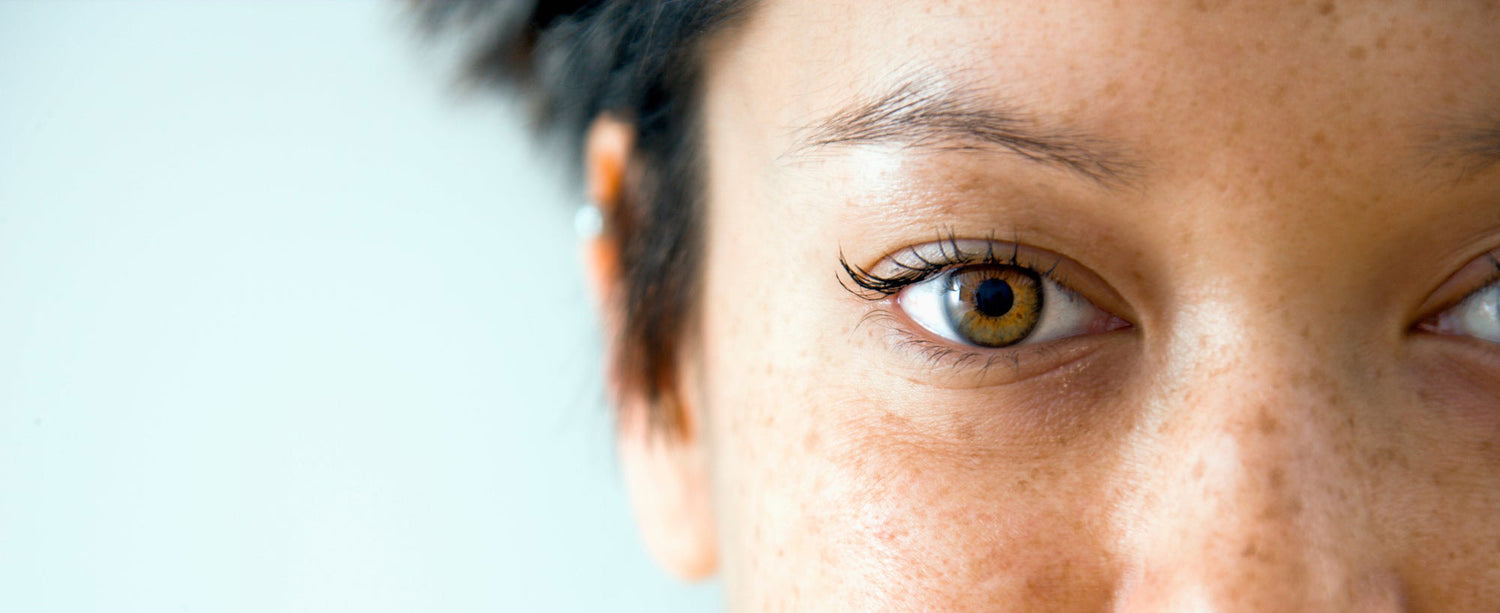Catching problems early.
Many who suffer from common conditions don't exhibit symptoms until the later stages—when they may be too late to reverse.
Your regular eye exams are your best preventative measure. Problems can be detected early on and treatment can be made a priority.

Learn more about common eye problems.
Learn more about common eye problems.
Blepharitis is a common eye condition in which the eyelid becomes inflamed resulting in redness, dryness and a feeling of grit in the eyes.
Usually, blepharitis occurs when tiny oil glands located near the base of your eyelashes become clogged, leading to inflammation and irritation on the surface of the eye and lids. This can happen in isolation, or in combination, with other factors that lead to dry eye disease.
Blepharitis can, however, be difficult to treat. Schedule an appointment with a FYidoctors optometrist if you notice any symptoms.
Les cataractes sont l’une des principales causes de perte de vision chez les personnes de plus de 40 ans et un des effets indésirables du vieillissement.
Habituellement indolores, les cataractes se développent au fil des ans, alors que le cristallin commence naturellement à durcir et à s’opacifier ou à blanchir. Ce cristallin opaque empêche la lumière d’atteindre votre rétine (la partie de vos yeux qui transmet l’information visuelle à votre cerveau). Il en résulte une perte de vision — un peu comme si vous regardiez au travers d’un pare-brise sale.
Bien que les cataractes se forment naturellement avec l’âge, vous êtes plus à risque d’en être atteint si vous êtes diabétique et si vous souffrez d’hypertension, si vous êtes obèse, si vous êtes fumeur ou s’il y a des antécédents de cataractes dans votre famille.
Il est essentiel de traiter les cataractes dès leur formation pour maintenir une vision adéquate. Prévoyez un examen de la vue régulièrement si vous remarquez tout symptôme.
Eye floaters and flashes are small moving spots that may appear in your field of vision and are particularly noticeable when you look at bright lights or single colour objects (such as a piece of white paper or the sky).
While eye floaters can be incredibly annoying, they generally don't interfere with your sight and many people learn to live with them. The condition often improves over time.
Eye floaters can, however, be indicative of a more serious condition, particularly if they're accompanied by sudden flashes of light or a sudden loss of peripheral vision. If you experience these symptoms, or want to learn more about eye floaters and flashers, you should book an eye exam.
La dégénérescence maculaire liée à l’âge est l’une des principales causes de la perte de vision chez les personnes de 65 ans et plus. La DMLA est la détérioration de la zone maculaire (la partie de l’œil qui permet de voir clairement). Une personne souffrant de DMLA verra bien un calendrier sur le mur, mais les nombres et les lettres lui apparaîtront brouillés.
Voilà pourquoi il est si important que les personnes de 60 ans et plus passent un examen de la vue au moins une fois par année.
Glaucoma is a serious condition that damages your optic nerve. Untreated glaucoma can result in permanent loss of vision. Glaucoma tends to be inherited and may not show up until later in life. It is also often asymptomatic until the late stages of the disease. If you're over the age of 40 and have health problems such as diabetes or a family history of glaucoma, you should have an eye exam every year.
1 in 1,000 people are likely to suffer from this degenerative eye disease. Teenagers are most at risk.
Keratoconus is a slowly occurring, progressive eye disease in which the normally round cornea (the clear outer part of the eye) thins and begins to bulge into a cone. It then bends the light as it enters the eye and results in blurred vision. While the exact cause of the disease remains unknown, many doctors suspect that it is due to a combination of genetics and environmental conditions.
Early detection is key in minimizing the more severe symptoms of the disease.
If you have Type 1 or Type 2 diabetes, you may be at risk of diabetic retinopathy, one of the leading causes of blindness among North American adults.
The disease is caused by changes in the blood vessels of the retina (the part of your eye that transmits visual information to your brain). In some cases, blood vessels may swell and leak fluid. In other cases, abnormal new blood vessels may grow on the surface of your retina.
If you suffer from diabetes, you may have diabetic retinopathy and not even know it. Symptoms often go undetected at first, but they gradually worsen and result in vision loss and even blindness in one or both eyes.
There is currently no cure for diabetic retinopathy, but the disease can be treated and its symptoms slowed and managed if caught early. If you have diabetes, you should schedule an eye exam every year.
Up to 29% of Canadians suffer from Dry Eye Disease which can cause red eyes, affect vision, comfort and overall ocular health. And with the increase in digital technology usage like smartphones, there’s a greater number of younger people dealing with these issues.
Learn more about the causes, risks and symptoms of Dry Eye Disease and how FYidoctors can help you find relief.
Computer Vision Syndrome is one of the most common health complications in the workplace. It's caused by staring at a computer screen for extended periods of time. Pixelated images cause your eyes to constantly refocus on different objects resulting in eyestrain, blurred vision, headaches, neck and back pain.
Avoiding Computer Vision Syndrome is simple if you follow a few guidelines from your eye doctor. We offer lenses that are specifically designed for computer use. They can help improve your vision and eliminate eyestrain.
Learn more about common eye problems.

